Are you choosing between Made In vs. All-Clad pans? Don’t worry! With this in-depth comparison, you can choose between the two in no time.
What is Made In Cookware?
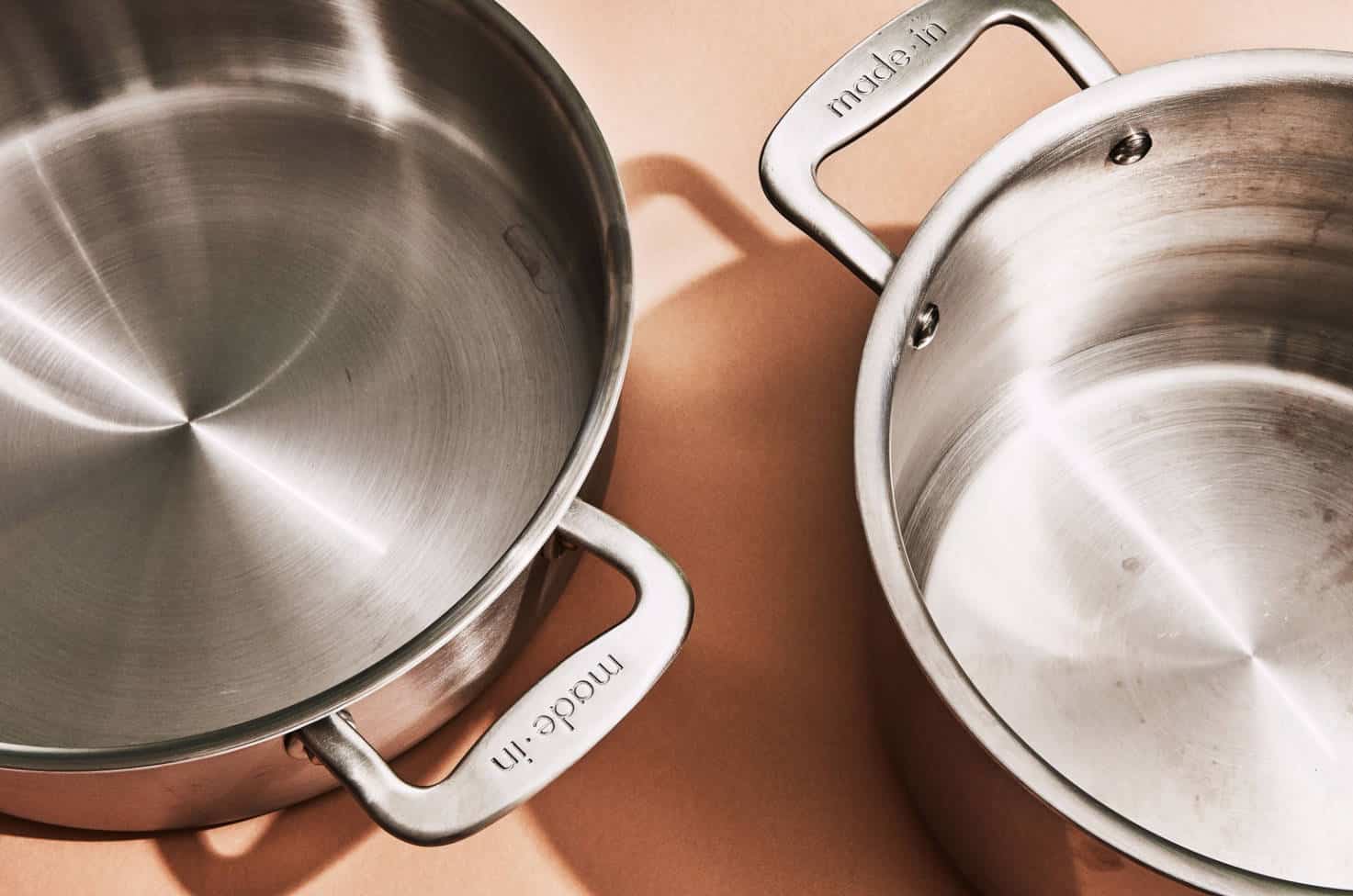
Made In is a company by Adam Bridegan, Jake Kalick, and Bradford Malt in 2017. The company is known for its quality products and affordable price. In fact, one of their brand visions is to be the go-to cookware brand for millennials.
They are known for their stainless steel and carbon steel pans. They also make premium copper pans.
What is All-Clad Cookware?
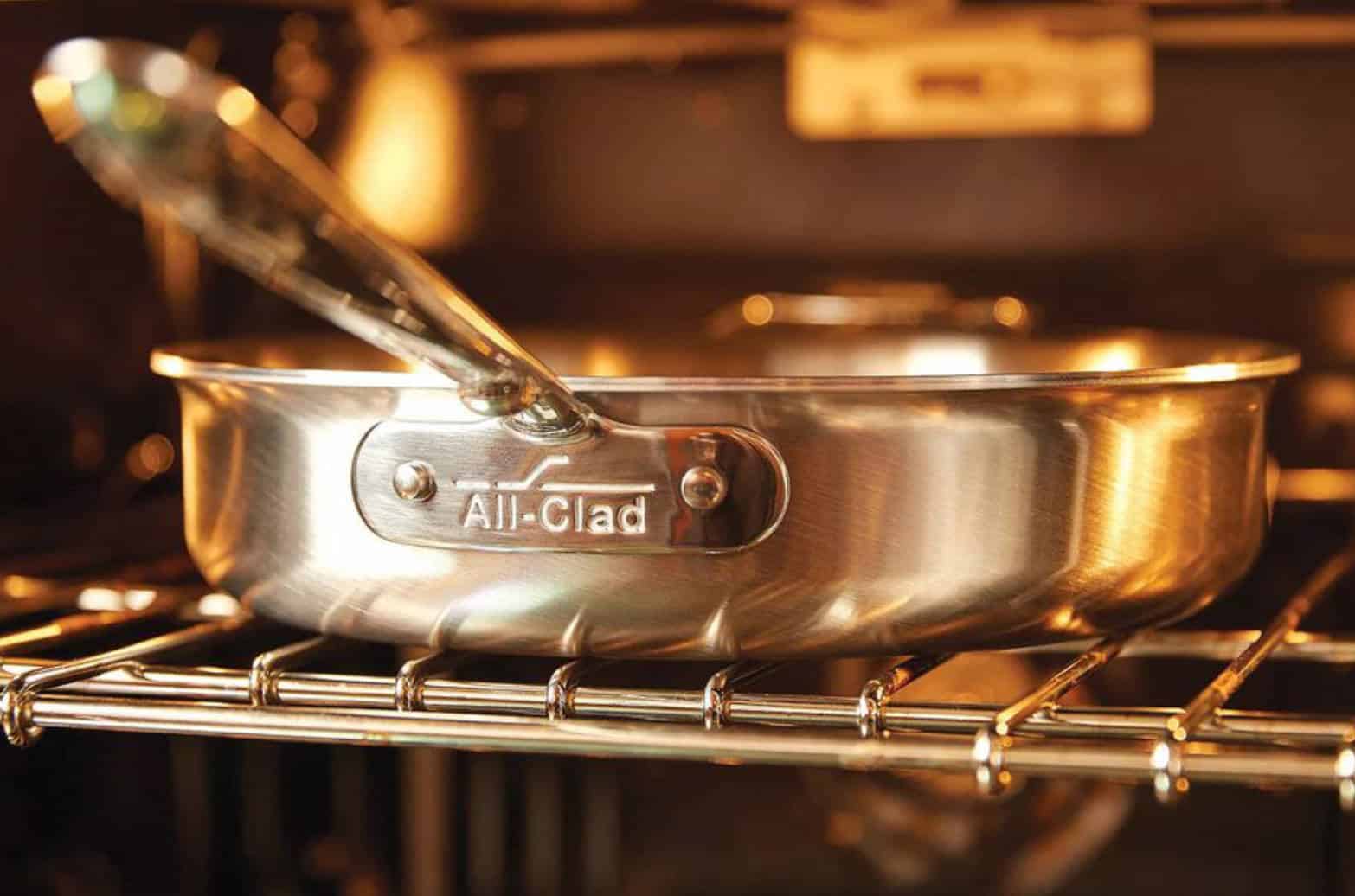
All-Clad is a household name when it comes to premium cookware. Professional metallurgist John Ulam founded the company in 1971.
Since then, the company has served countless kitchens for half a decade. They are well known for their tri-ply and five stainless and aluminum-clad cookware.
Their line of products is considered one of the most incredible cookware sets in the industry. All-clad cookware is corrosion and heat resistant. The durability is something to look forward to since they are known to last up to a lifetime.
Now that we know the origins and overview of both the All-Clad and Made In, let’s compare their different factors.
Number of Options
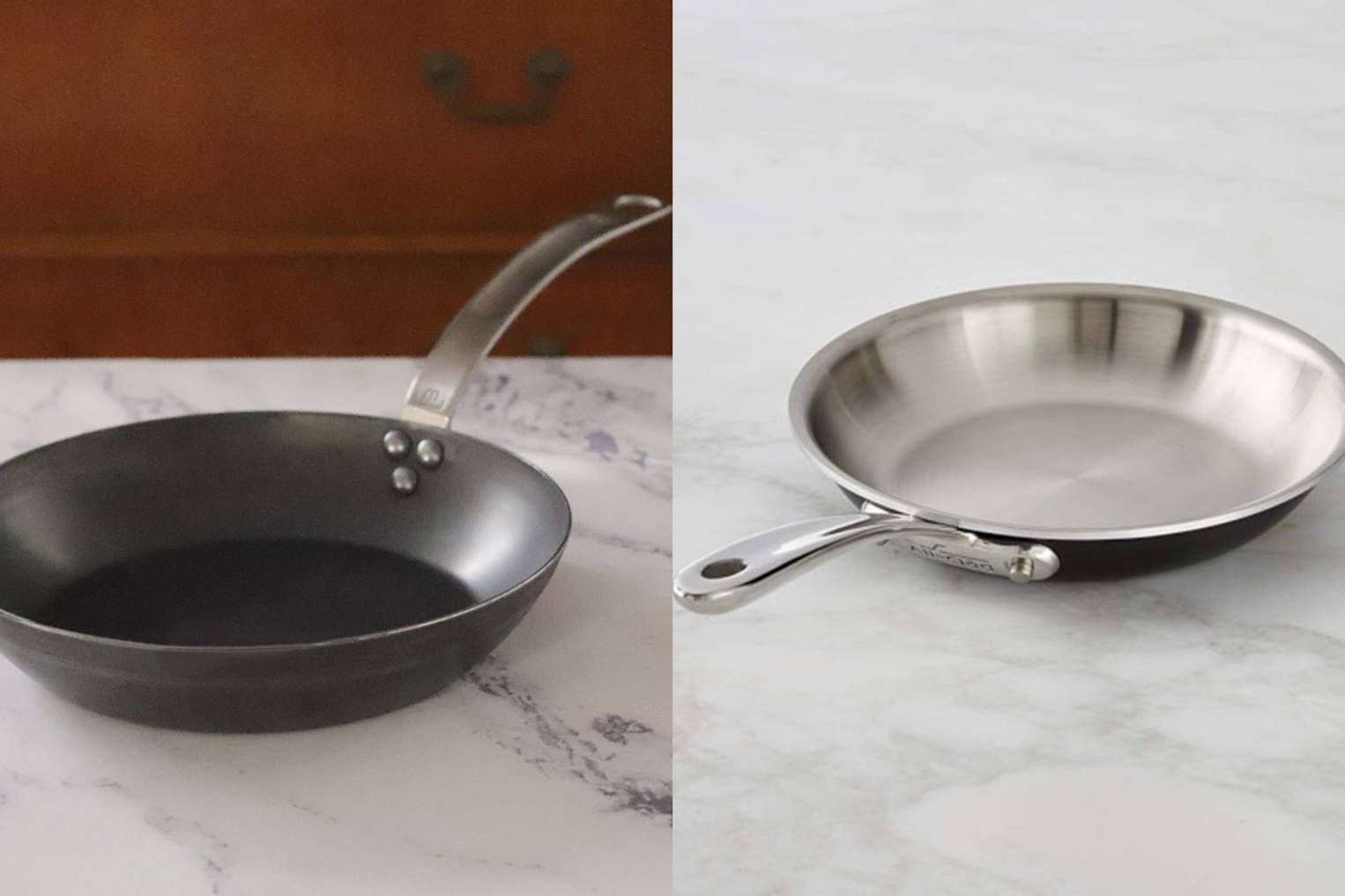
All-Clad offers much more than Made In regarding the number of pans to choose from.
Of course, Made In is a newcomer in making cookware, while All-Clad has been serving the home chefs and professionals for half a decade.
When it comes to Made In, they have three options for the pans, such as:
Stainless Clad
The Made In stainless steel clad pan comes with 5-ply metal layers. It’s comparable with All-Clad’s D5 cookware.
Carbon Steel
Carbon steel cookware is an edge of Made In against All-Clad since the latter doesn’t offer this type of cookware.
The carbon steel cookware is known for its durability and heating properties. Carbon steel can also develop a patina over time, like cast iron pans.
Premium Non-Stick
The premium non-stick pan from Made In comes with a PTFE coating. The core is made with five layers of metal, while the coating can last seventy more times than ceramic coating.
Now that we know the selection from Made In, let’s see the choices the All-Clad offers, such as:
All-Clad D3
D3 or tri-ply cookware is made with a layer of aluminum sandwiched between two layers of stainless steel. The tri-ply pans are designed to distribute heat evenly. They are also known to be durable and easy to store.
All-Clad D5
All-Clad D5 is cookware made with five layers of metal. The layer goes almost the same as the D3 series. The only difference is that the aluminum layer is separated as another layer of stainless steel is placed between them.
Since the D5 came after the D3, it has more improvements that come with a higher price. It has two variations, brushed and polished.
Copper Core
Copper is a very reactive material, so in order to use the excellent heat distribution of copper, All-Clad combined it with stainless steel. Combining these two metals resulted in a durable and non-reactive pan with superior heat distribution.
All-Clad Hard Anodized Aluminum
All-Clad Hard Adonized has two series: B1 and HA1. The non-stick hard-anodized aluminum is made to have excellent heat distribution and is durable.
Materials and Manufacturing Process
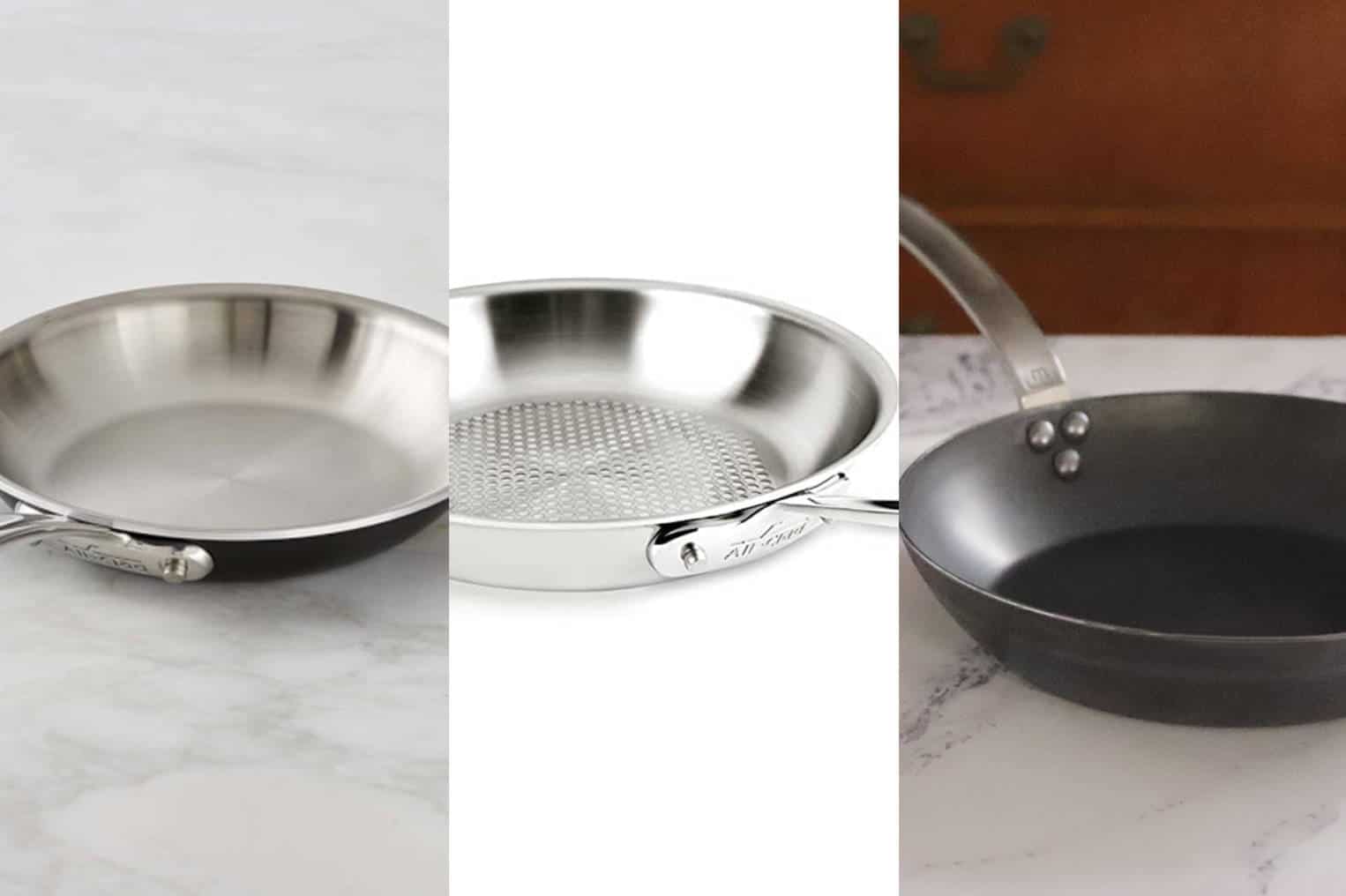
Since we know the type of pans each company offers, let’s get into the materials and manufacturing process.
Stainless Steel-Cladded Pans
The stainless-steel pans from Made In are made with 5-ply bonded metal, while All-Clad offers both 3-ply and 5-ply bonded pans.
There aren’t any significant differences in their stainless pans when it comes to these two companies.
Both are made to last, durable, and have excellent heat conduction.
Non-Stick Pans
When it comes to materials to make their non-stick pans, the two companies differ with their materials for the core.
All-Clad non-stick pans are made with a durable aluminum core and anodized aluminum finish. They also apply three layers of PFOA-free PTFE (Teflon) coating to ensure a non-stick surface.
On the other hand, Made In makes their non-stick pans with a 5-ply aluminum and stainless-steel core and the same coating as the All-Clad non-stick pans.
Carbon Steel
Carbon steel is one of the most innovative cookware. It combines the three essential qualities for easy cooking: non-stick, heats up fast, and even. It relies on combining the qualities between cast iron, stainless steel, and non-stick pans.
Carbon steel pans are made with iron and carbon in a ninety-nine to one ratio. Although carbon steel pans are very versatile, they are also high maintenance.
At the moment, All-Clad doesn’t offer any carbon steel pans. So, if carbon steel pans are what you want to try, Made In cookware is the brand for you.
Different Core Materials
Made In has a minimal amount of core materials present in their pans. In fact, they only have two: stainless steel-aluminum and iron-carbon.
Meanwhile, All-Clad has four: anodized aluminum, stainless steel, copper, and graphite.
All-Clad vs. Made In: Which has Better Heat Conduction?
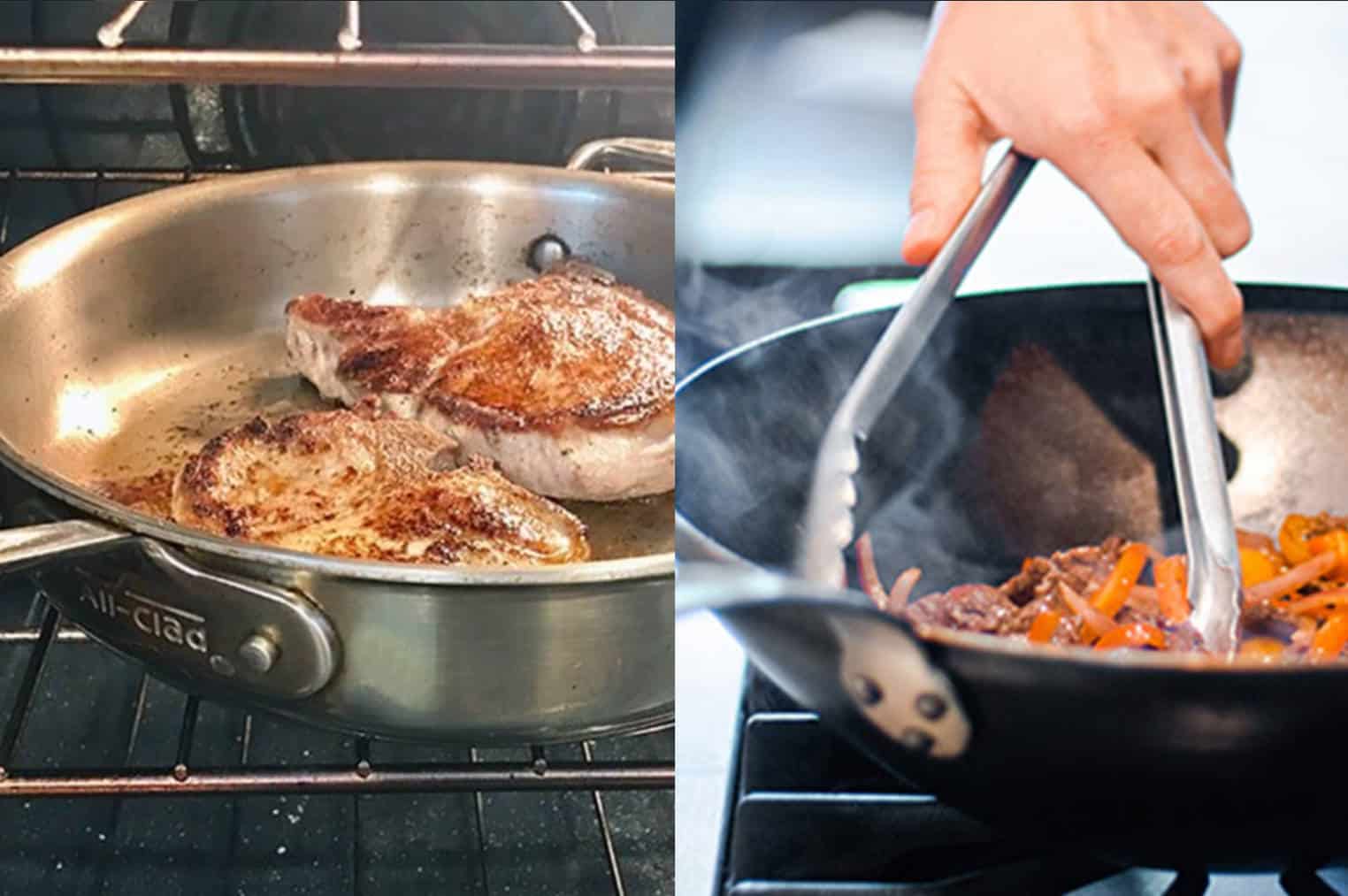
Cooking is a process that revolves heavily around heat, so having cookware that does not only has excellent heat conduction is vital for a fantastic cooking process.
Faster Heat Transfer
The All-Clad D3 will take the top spot when it comes to transferring heat. The single aluminum layer allows the heat to move faster throughout the pan.
Made In doesn’t have any tri-ply pan, although their carbon steel pans are a great alternative to the All-Clad D3 when it comes to fast heat transfer.
Heat Retention
The 5-ply clad pans from both Made In and All-Clad D5 are great for heat retention. The pans come with two layers of aluminum designed to retain heat much longer than other pans.
You can choose between the two pans since they are very similar in heat retention.
Heat Resistance
The Made In cookware is the winner when it comes to heat resistance. Made In can resist heat from 800-1200 degrees Fahrenheit, while All-Clad can only go up to 450-600 degrees Fahrenheit.
Induction Cooking
All of the pans mentioned from Made In and All-Clad are compatible with induction cooking, save for the All-Clad Essential Non-Stick.
The Essential series from All-Clad isn’t compatible with induction cooking since it doesn’t have a magnetic base, which is vital to transferring heat through induction.
Where Are They Made?
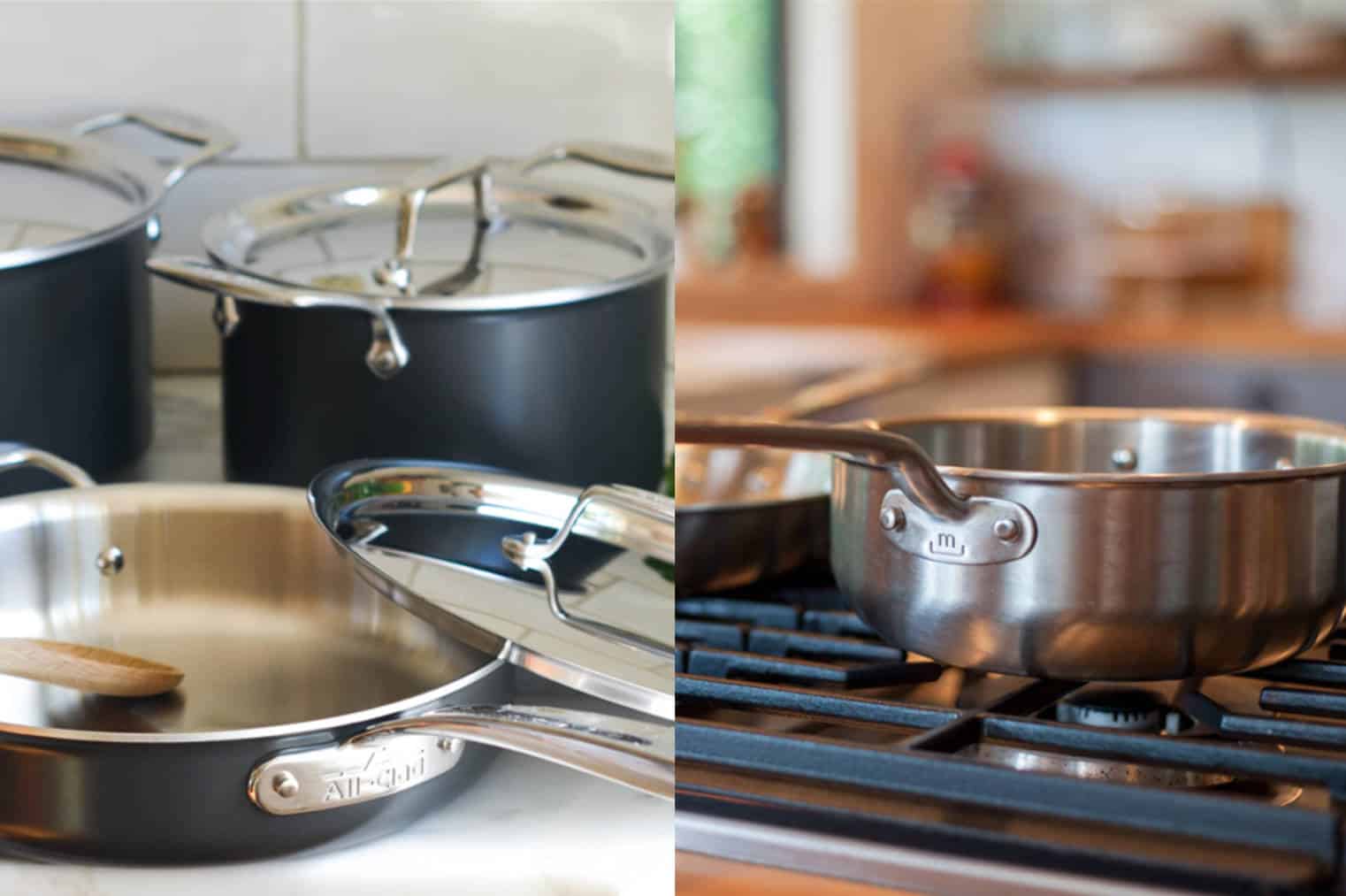
Choosing which place the cookware is going to be made can say a lot about the quality of the product. If this factor is of significance to you, you are in luck. This in-depth review will show you the manufacturing process of Made In and All-Clad Pans.
Made In Manufacturing Process
Made In outsources some of their raw materials and processes to European countries like Italy and France. While their non-stick pans are made within the USA and Italy, they outsource their carbon steel pans from France.
It came as no surprise that France has been dominating the market when making carbon steel pans.
All-Clad Manufacturing Process
All-Clad made, engineered, and produces its cookware in Canonsburg, Pennsylvania, since the day it was founded.
Price
The Made In cooking is significantly lower than All-Clad when it comes to price. As stated above, Made In outsources its raw materials and manufacturing processes to other countries, namely France and Italy. The outsourced products cut the cost of their manufacturing process significantly.
Made In utilizes a direct-to-customer approach when it comes to selling its products. They don’t offer a retailer or go-betweens to cut costs. As stated, excellent quality at a lower price is one of the brand’s missions.
Meanwhile, All-Clad produces everything from the USA. The localize production increases the price of their cookware.
Since the company was present before the widespread use of the internet, All-Clad cookware can be seen in retail stores, increasing the prices.
To see the difference in their prices, here’s a comparison chart:
| Model | Price |
| Made In 12-Inch Stainless Steel Frying Pan | $85.00 |
| All-Clad D5 12-Inch Stainless Steel Frying Pan | $194.95 |
| Made In Stainless Steel Saute Pan With Lid | $34.75 |
| All-Clad D5 3-Quart Stainless Steel Saute Pan With Lid | $124.95 |
You can see that the price of All-Clad pans is almost double the price compared to Made In cookware.
All-Clad vs. Made In: Which is the One for You?
The bottom line is choosing which pans are for you based on your preferences. If you value quality and expertise in the cookware industry, go for the All-Clad Pans.
On the other hand, if quality with a lower price is what you are looking for, then Made In pans are the ones for you.
In Conclusion
Choosing between two cookware brands is a tough decision to make. Of course, we want the best of quality to be the new addition to our kitchen.
We hope this in-depth comparison between Made In vs. All-Clad pans made your decision easier and faster.
If you have more questions and other inquiries about cooking and kitchenware, be sure to comment them down below.
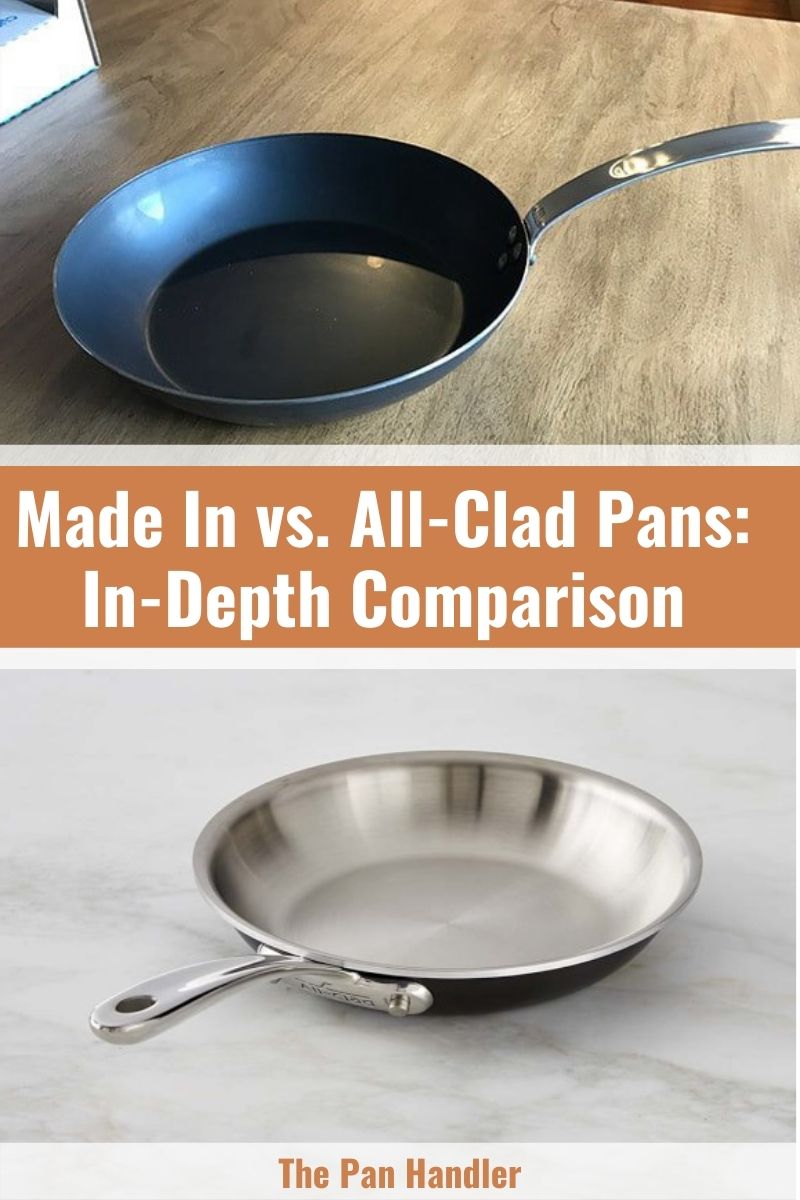

Michael Johnson is the founder of Pan Mastery, Inspired by his blacksmith grandfather’s legacy has a deep appreciation for hand-crafted pots and pans, he provides invaluable guides, reviews, and recipes to enhance your culinary journey.

Nice review!
As a mechanical engineer, I had to study metallurgy and heat transfer.
Made In uses three layers of aluminum in the middle. The D3 also uses three layers of aluminum, but two of them are very thin and used only to improve bonding. Since materials and overall thickness are roughly the same, Made In better compares to the All Clad D3.
The D5 was originally designed to provide more iron for induction cookware. When they figured out the outer layer of SS already had enough iron, All Clad was left with a product that had an unnecessary feature. The D5 maintained the same thickness as the D3, which means they substituted additional SS for aluminum. Since SS has a much higher specific heat (takes more energy to increase temperature) than aluminum, the D5 will heat slower and RETAIN heat better than the D3.
Hi Glenn,
Thank you for your valuable input! It’s always great to hear from individuals with specialized knowledge in related fields.